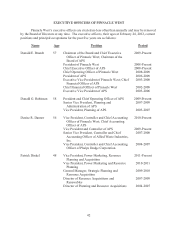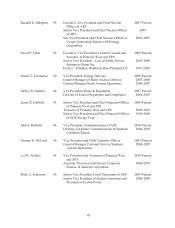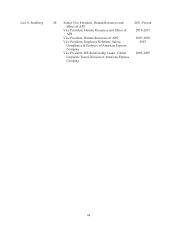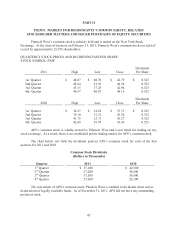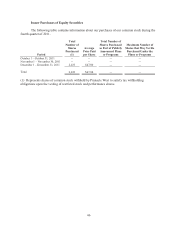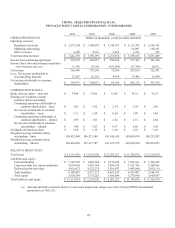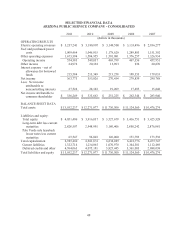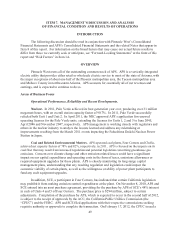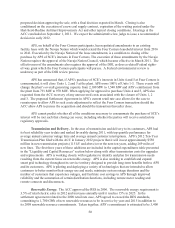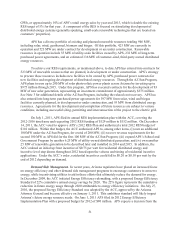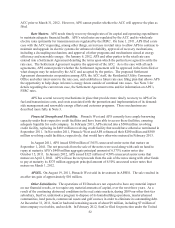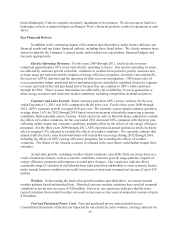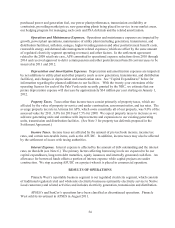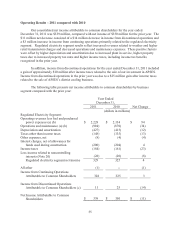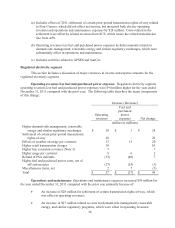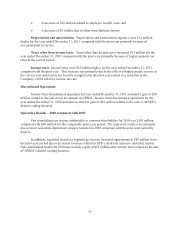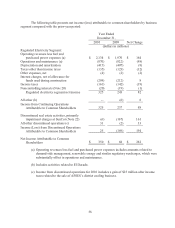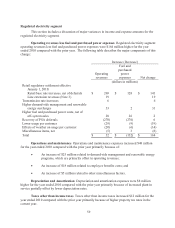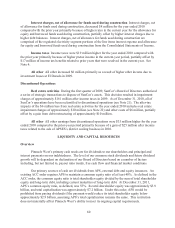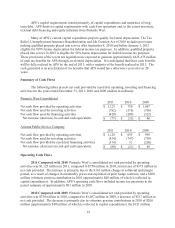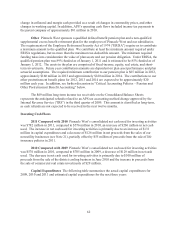APS 2011 Annual Report Download - page 76
Download and view the complete annual report
Please find page 76 of the 2011 APS annual report below. You can navigate through the pages in the report by either clicking on the pages listed below, or by using the keyword search tool below to find specific information within the annual report.52
ACC prior to March 31, 2012. However, APS cannot predict whether the ACC will approve the plan as
filed.
Rate Matters. APS needs timely recovery through rates of its capital and operating expenditures
to maintain adequate financial health. APS’s retail rates are regulated by the ACC and its wholesale
electric rates (primarily for transmission) are regulated by the FERC. On June 1, 2011, APS filed a rate
case with the ACC requesting, among other things, an increase in retail rates to allow APS to continue to
maintain and upgrade its electric systems for enhanced reliability, approval of recovery mechanisms,
including a decoupling mechanism, and approval of other programs and mechanisms aimed at energy
efficiency and renewable energy. On January 6, 2012, APS and other parties to the retail rate case
entered into a Settlement Agreement detailing the terms upon which the parties have agreed to settle the
rate case. The Settlement Agreement requires the approval of the ACC. As is the case with all such
agreements, APS cannot predict whether the Settlement Agreement will be approved in the form filed or
what changes may be ordered by the ACC and accepted by the parties. The proposed Settlement
Agreement demonstrates cooperation among APS, the ACC staff, the Residential Utility Consumer
Office and other intervenors to the rate case, and establishes a future rate case filing plan that allows APS
the opportunity to help shape Arizona’s energy future outside of continual rate cases. See Note 3 for
details regarding the current rate case, the Settlement Agreement terms and for information on APS’s
FERC rates.
APS has several recovery mechanisms in place that provide more timely recovery to APS of its
fuel and transmission costs, and costs associated with the promotion and implementation of its demand-
side management and renewable energy efforts and customer programs. These mechanisms are
described more fully in Note 3.
Financial Strength and Flexibility. Pinnacle West and APS currently have ample borrowing
capacity under their respective credit facilities and have been able to access these facilities, ensuring
adequate liquidity for each company. In February 2011, APS entered into a $500 million revolving
credit facility, replacing its $489 million revolving credit facility that would have otherwise terminated in
September 2011. In November 2011, Pinnacle West and APS refinanced their $200 million and $500
million revolving credit facilities, respectively, that would have otherwise matured in February 2013.
In August 2011, APS issued $300 million of 5.05% unsecured senior notes that mature on
September 1, 2041. The net proceeds from the sale of the notes were used along with cash on hand to
repay at maturity APS’s $400 million aggregate principal amount of 6.375% senior notes due
October 15, 2011. In January 2012, APS issued $325 million of 4.50% unsecured senior notes that
mature on April 1, 2042. APS will use the net proceeds from the sale of the notes along with other funds
to pay at maturity its $375 million aggregate principal amount of 6.50% unsecured senior notes that
mature on March 1, 2012.
APSES. On August 19, 2011, Pinnacle West sold its investment in APSES. The sale resulted in
an after-tax gain of approximately $10 million.
Other Subsidiaries. The operations of El Dorado are not expected to have any material impact
on our financial results, or to require any material amounts of capital, over the next three years. As a
result of the continuing distressed conditions in the real estate markets, during 2009 our other first-tier
subsidiary, SunCor, undertook a program to dispose of its homebuilding operations, master-planned
communities, land parcels, commercial assets and golf courses in order to eliminate its outstanding debt.
At December 31, 2011, SunCor had total remaining assets of about $9 million, including $7 million of
intercompany receivables, and no debt. In February 2012, SunCor filed for protection under the United


